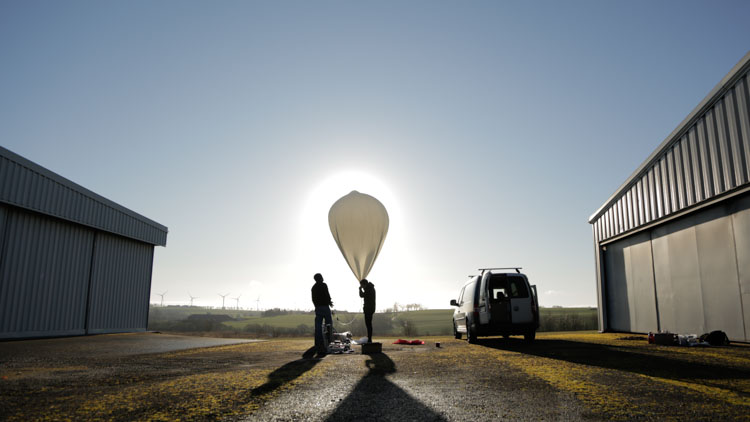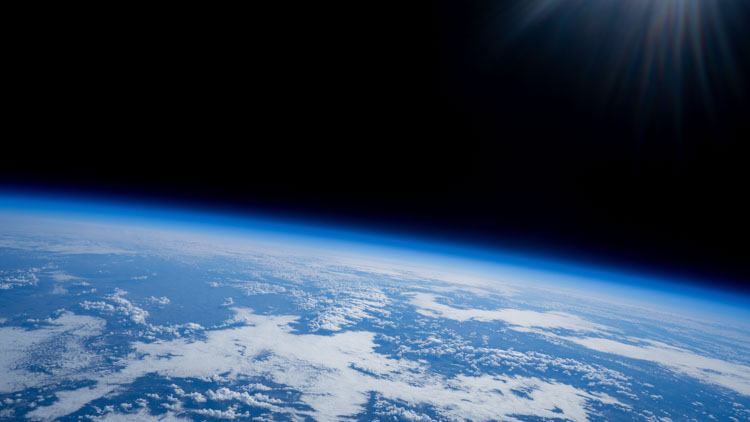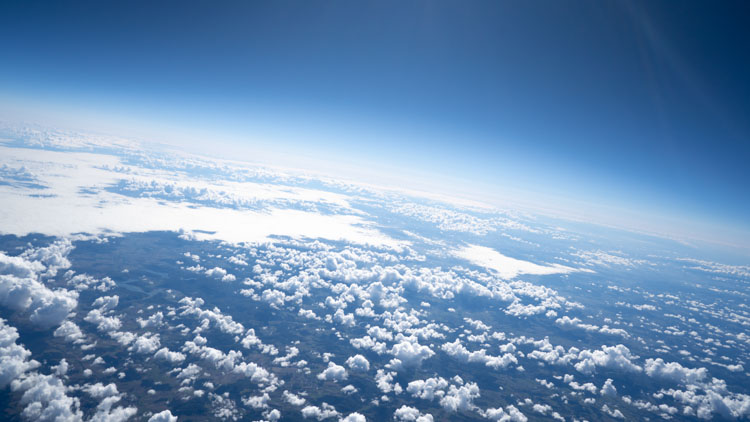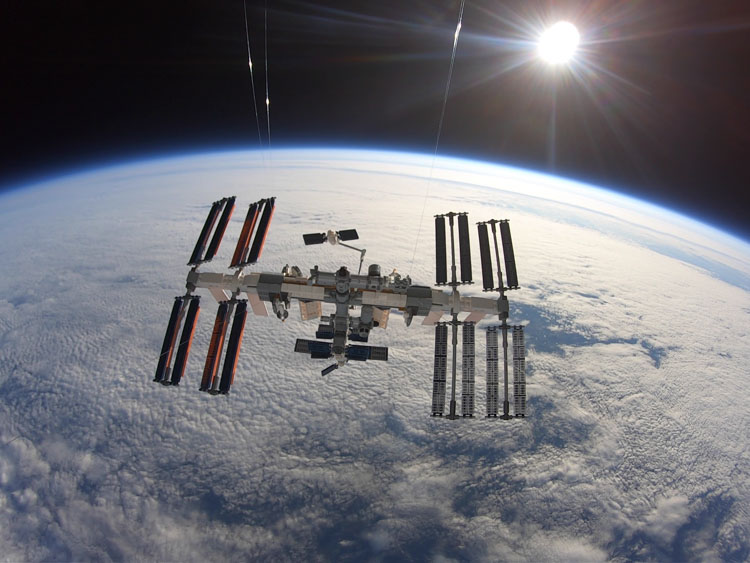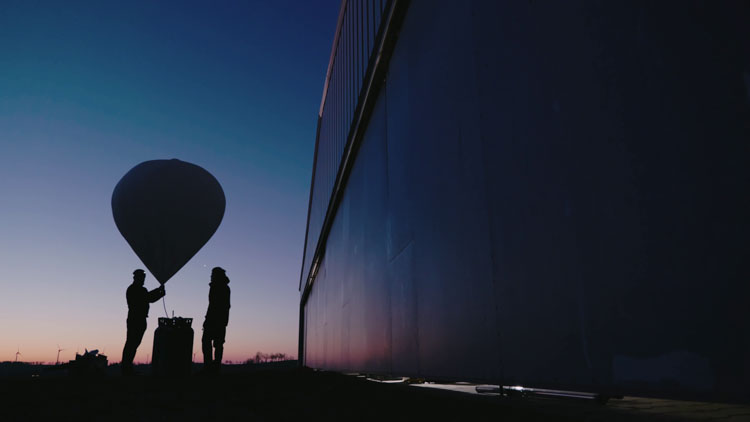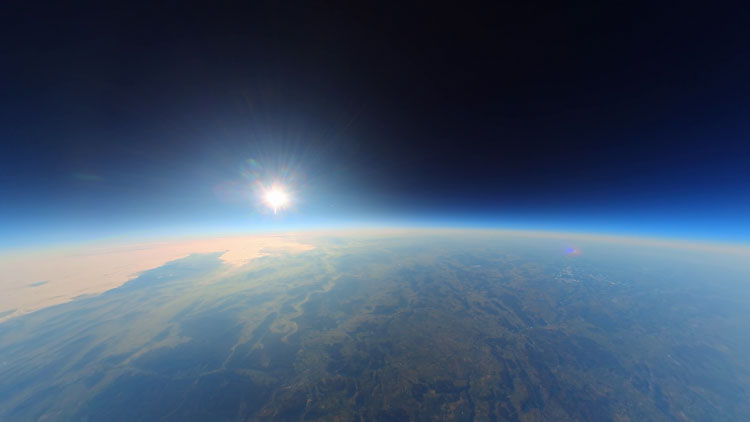What does a weather balloon cost?
The price of a weather balloon depends on your goal: How high do you want your weather balloon to fly and or how much payload do you want the weather balloon to carry? Weather balloons are available in different sizes and thus costs vary. Prices for all models of our high quality meteorological balloons can be found in our
shop.
What is the delivery time of weather balloons?
We hand over all orders to DHL or DHL Express from our warehouse in Germany on the next business day. The exact delivery time depends on whether the delivery is to be made within or outside the EU. One thing is clear: With our logistics partners DHL and DHL Express we enable a maximum of delivery speed. Faster is not possible.
Why does a weather balloon burst?
Weather balloons can reach altitudes of up to 40,000 meters (131,233 ft). That's three times higher than commercial aircraft fly. As altitude increases, the ambient atmospheric pressure decreases. The further we move away from sea level in altitude, where the atmospheric pressure is exactly 1 bar or 1,000 hPa, the air pressure decreases noticeably. When climbing mountains, for example, breathing becomes difficult quite quickly. At an altitude of just under 5 kilometers (3.1 mi) (16,404 ft), the atmospheric air pressure has already halved. The helium or balloon gas, which provides buoyancy for the weather balloon, expands as the atmospheric pressure continues to decrease, and so does the weather balloon. Thus, weather balloons can become up to 15 meters in diameter due to their elastic natural rubber-latex mixture, before you then burst at minimum air pressure.
What is a weather balloon filled with?
In most cases, weather balloons are filled with helium or the less expensive balloon gas, which consists of about 95% helium. Weather services and research facilities occasionally also use hydrogen, as this has an even lower density and allows for even more buoyancy.
How to fill a weather balloon?
To fill a weather balloon with helium/ balloon gas, you need helium/ balloon gas, which is available in gas bottles. To fill the helium/ balloon gas from the bottles in the previously calculated amount with the
Helium Calculator into the weather balloon, a
Pressure Reducer is needed. With this you can fill the exact calculated amount from the gas bottles via the hose of the Pressure Reducer into the weather balloon.
What is a weather balloon made of?
A weather balloon or meteorological weather balloon consists, among other things, of a natural rubber-latex mixture, so that the weather balloon can expand to many times its volume with increasing altitude.
Are you allowed to launch a weather balloon?
You are allowed to launch a weather balloon if you have obtained the required ascent permit in your country for the ascent and if you have obtained the ascent permit for the operation of your weather balloon and if you meet the required conditions, if any. Thus, a weather balloon may be launched by anyone, whether a research institution, business, school or private individual. Here you can find a
listing of aviation authorities of different countries.
Where does a weather balloon launch have to be registered?
In most cases, the ascent of weather balloons is applied for at the respective aviation authorities or traffic authorities of the respective country. We have compiled a few countries and their aviation authorities
here.
Is it allowed to launch a weather balloon as a private person?
Yes, as long as you apply for the ascent permit in your country and comply with any conditions required for the ascent, so basically anyone may launch a weather balloon, whether a private person, school, company or research institution, who has obtained the required ascent permit.
Can you print on weather balloons? Is it possible to print a logo on weather balloons?
In order to print a logo on the sensitive and very thin layer of the weather balloon, the already very thin surface must be roughened so that the color of the logo adheres to the weather balloon. The roughening creates a predetermined breaking point, since the weather balloon expands due to the ever decreasing ambient pressure during the ascent and will burst at the printed area already at a very low altitude. In this respect, printing the weather balloon is not possible or sensible.
Is there a difference between weather balloon, meteorological weather balloon, high altitude balloon (HAB), sounding balloon and stratospheric balloon?
No. Since weather balloons usually fly in the so-called stratosphere, this atmospheric layer starts from 15 kilometers altitude (9.3 mi) (49,212 ft), weather balloons are also sometimes called stratospheric balloons, meteorological weather balloons, meteorological balloons, high altitude balloons and sounding balloons.
What are weather balloons and meteorological weather balloons used for?
Weather balloons, stratospheric balloons, high altitude balloons (HAB), sounding balloons or also known as meteorological weather balloons, have numerous applications: Weather balloons are mainly used by weather services, universities for atmospheric altitude research and weather forecasting. Furthermore, weather balloons are used by schools for school projects to launch small cameras and measuring instruments as part of school project weeks. Private individuals use weather balloons, for example, to make their own video recordings from the edge of space. Weather balloons are also used near the ground to lift amateur radio payloads such as weather probes and to transmit via APRS. Weather balloons are fixed by amateur radio operators e.g. also in 40 m height and antennas are fixed to them. Furthermore, weather balloons are used for height marking work, e.g. to mark a later wind turbine and to measure the actual wind strength over a longer period of time, e.g. at a height of 150 meters.
How high can a weather balloon fly?
Weather balloons are available in different sizes and therefore fly to different altitudes. The largest weather balloon available for maximum altitude is the
Weather Balloon 3000. The Weather Balloon 3000 can reach altitudes of up to 40 altitude kilometers (24.9 ft) (131,233 ft), which is three times higher than commercial airliners fly.
How far can a weather balloon expand?
The world's largest weather balloon available is the
Weather Balloon 3000, which can expand up to 14 meters (45.9 ft) in diameter at an altitude of 40 kilometers (24.9 mi) (131,233 ft)!
How do I fill a weather balloon?
In order to fill a weather balloon with the amount previously calculated with the
Helium Calculator for your mission, the helium/ balloon gas from the gas bottle must be filled into the weather balloon in the correct amount. To take the right amount from the gas bottle, we need a
Pressure Reducer, which is connected to the gas bottle. This allows you to precisely control the amount of gas that is filled into the weather balloon. A hose leads from the pressure reducer into the weather balloon, so that the helium/ balloon gas from the gas bottle can flow through the hose of the pressure reducer into the weather balloon.
How long does it take to fill a weather balloon?
This depends on the size of the weather balloon and the required amount of helium/ balloon gas. For small weather balloons, the filling process takes a few minutes, for large weather balloons such as the
Weather Balloon 2000, the filling process should take about 15 to 20 minutes, depending on the adjusted flow rate.
What is the storage time of a weather balloon? How long can I store a weather balloon?
Provided the weather balloon has been stored dry at room temperature and sealed from direct sunlight in its original packaging, Stratoflights' high-quality weather balloons can be stored for up to 2 years without loss of quality.
How much lifting capacity does a weather balloon have?
The load capacity depends on the size of the weather balloon. The load capacity consists of the dead weight of the weather balloon and the payload, which is attached to the weather balloon. The
Weather Balloon 2000 has a dead weight of 2,000 g (70.5 oz) and can carry a payload of 2,000 g (70.5 oz) and thus the carrying capacity is 4,000 g (141 oz).
How much weight can be attached to a weather balloon?
How much weight or payload can be attached to a weather balloon depends on the model of the weather balloon. For example, the
Weather Balloon 2000 can carry a payload of 2,000 g (70.5 oz).
What can you attach to the weather balloon?
The payload of a weather balloon can be various. Weather services let measuring instruments and radiosondes rise with parachutes on meteorological balloons, schools design their own small probes with cameras and measuring equipment, amateur radio operators fix antennas on weather balloons. Art objects are also fixed to weather balloons in galleries as part of special exhibitions. Road construction companies use weather balloons to measure temperature and humidity at heights where bridges will later be built. The possibilities are endless.
Where to buy the helium or balloon gas for weather balloons?
At the gas retailers in your region. These can be small local suppliers, but also large gas suppliers such as Air Liquide and Linde Gas. Larger hardware store chains also carry balloon gas in large gas tanks.
Where to buy a weather balloon? Weather balloon for sale?
High quality weather balloons or meteorological weather balloons or also called stratospheric balloons, you can buy at
Stratoflights. We offer weather balloons of different sizes to fit your mission.
What is the difference between a weather balloon and stratospheric balloon, high altitude balloon (HAB) and sounding balloon?
Weather balloons are often called meteorological weather balloons, high altitude balloons (HAB), sounding balloons and also stratospheric balloons. However, these are just synonyms, so there is no difference.
What colors are weather balloons available in?
Weather balloons are only available in white.
Is it possible to predict the flight path of weather balloons?
Yes, this is possible, even relatively accurately. For this purpose, you can use our tool
Predicting the flight path and predict the flight route to within a few kilometers the day before the launch.
How far does a weather balloon fly? Flight distance of a meteorological balloon?
That depends on many factors: First, on the altitude and ascent speed of the weather balloon and the wind speeds, as well as from which directions the wind blows, whether the wind direction changes at different altitudes, etc. On average, one can assume an average flight distance between take-off and landing point of a weather balloon with payload and parachute at a place altitude of about 36 altitude kilometers (22.3 mi) (118,110 ft) at an ascent speed of 5 meters per second of about 80 kilometers (50 mi) as the crow flies. In the summer months, the flight distance is often far below 80 kilometers (50 mi) as the crow flies. In winter, the flight distance increases and longer distances are possible.






 Français
Français 
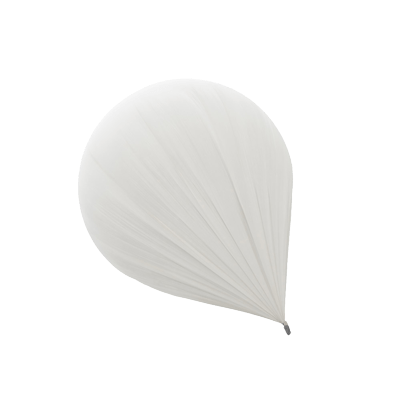

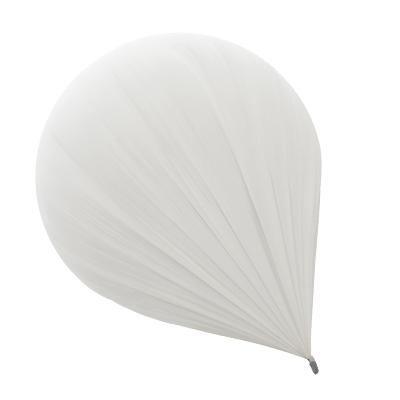
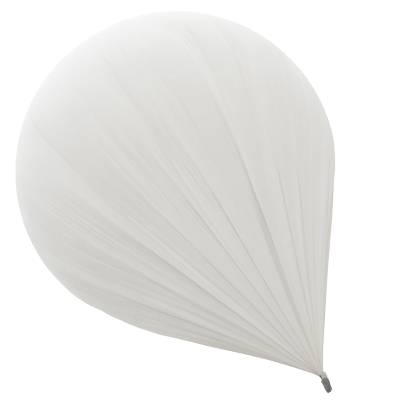






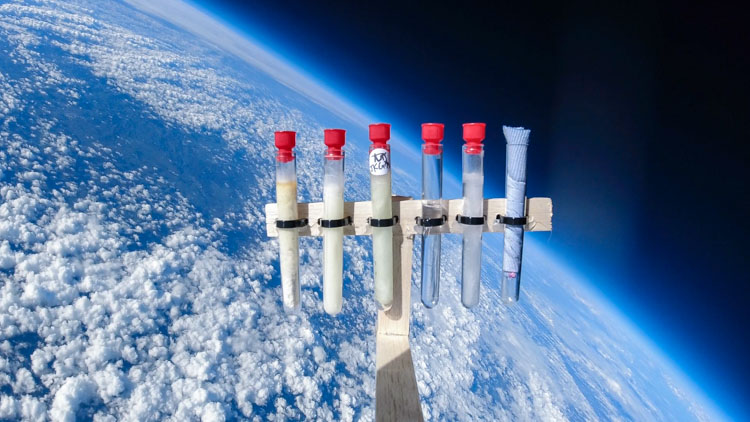
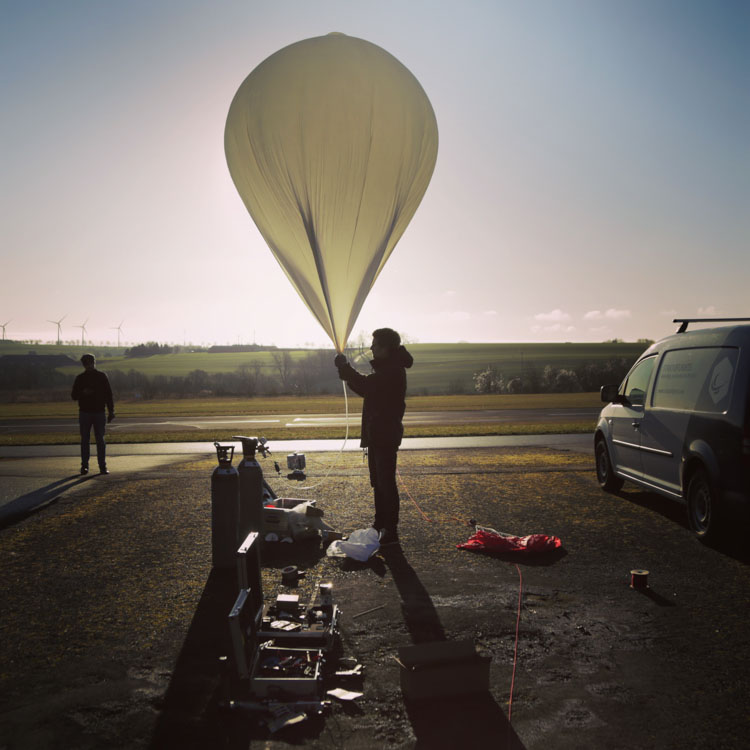
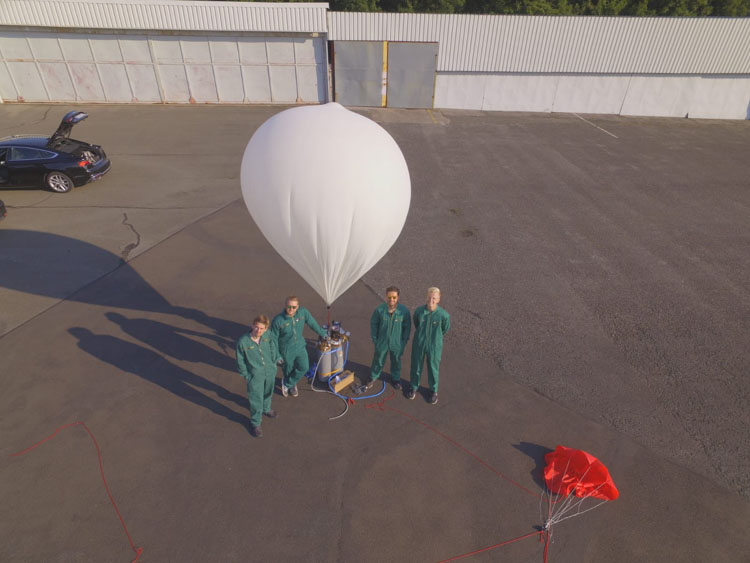


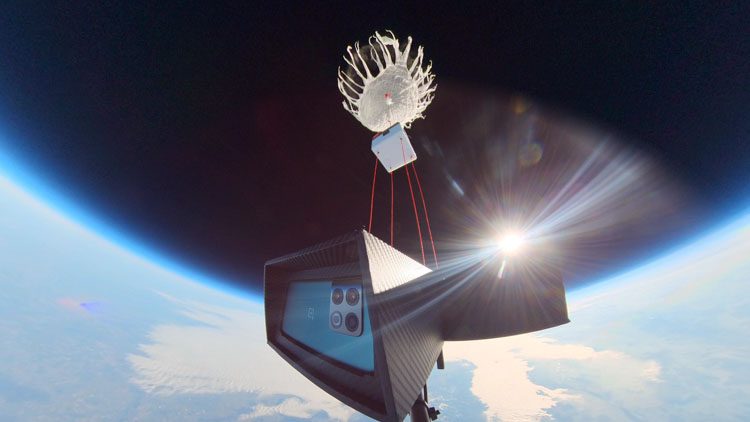
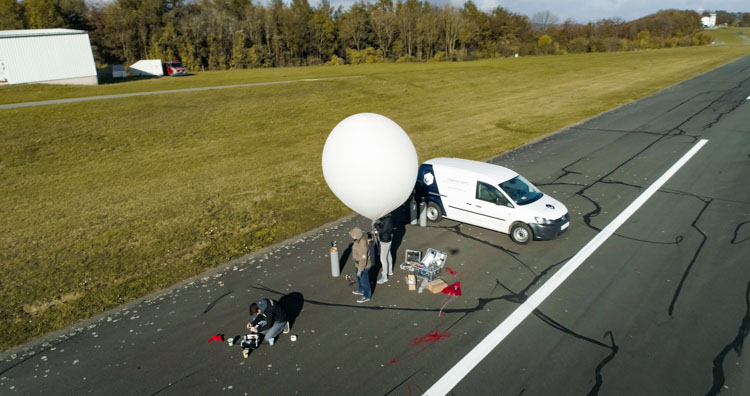
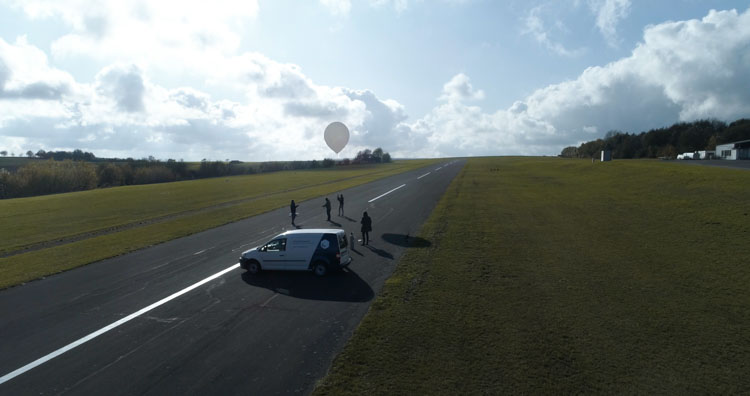
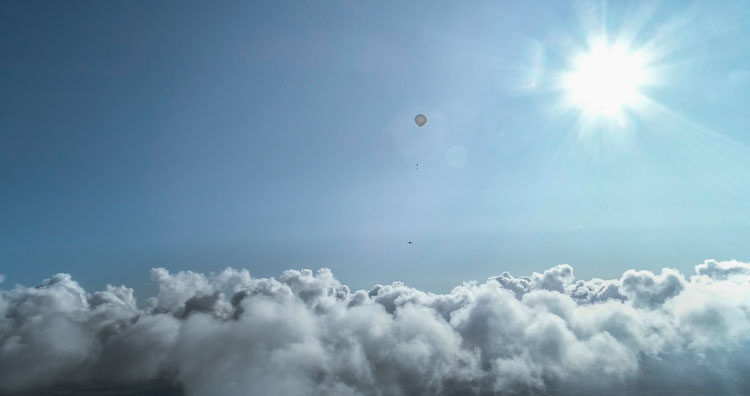
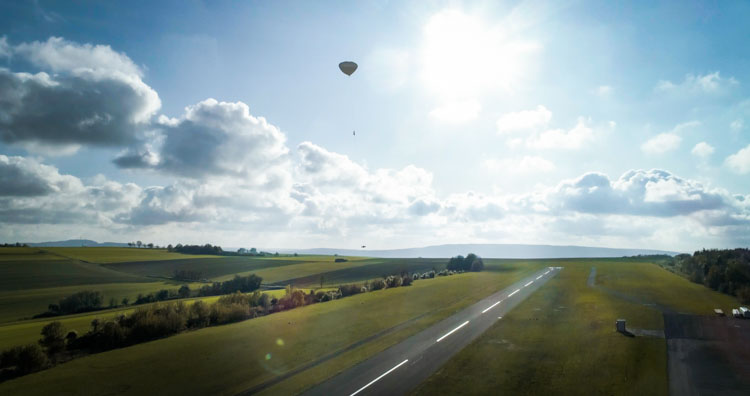
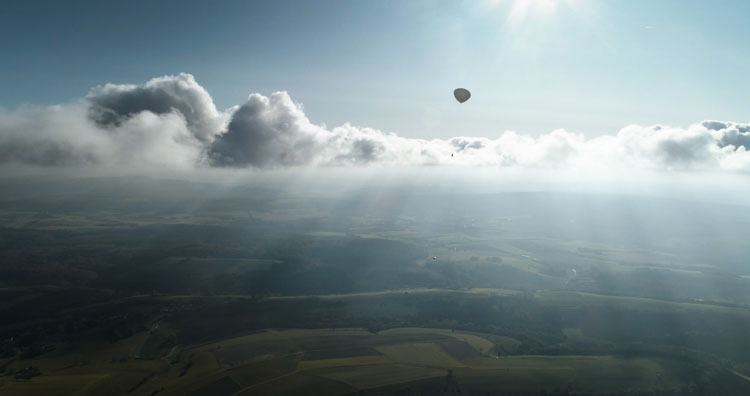
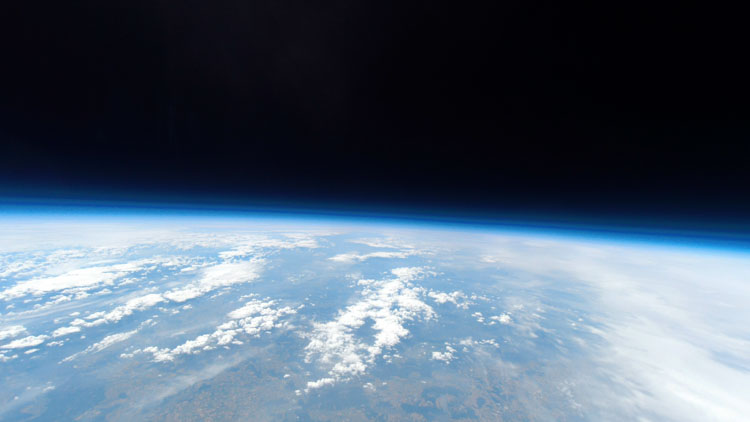
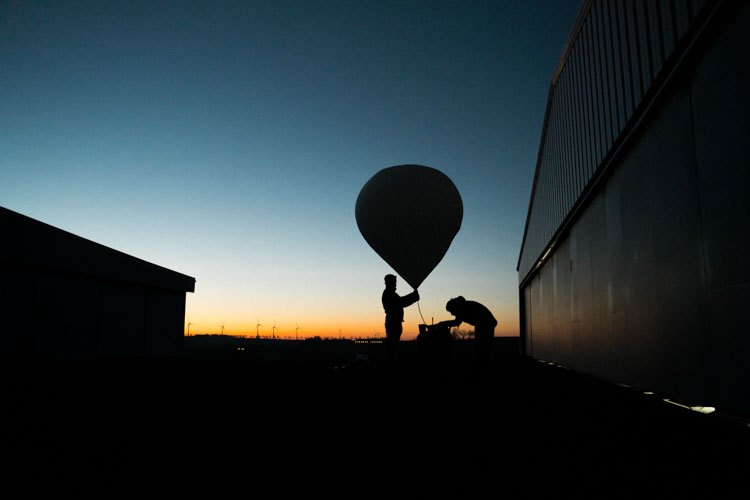

.jpeg)
.jpeg)
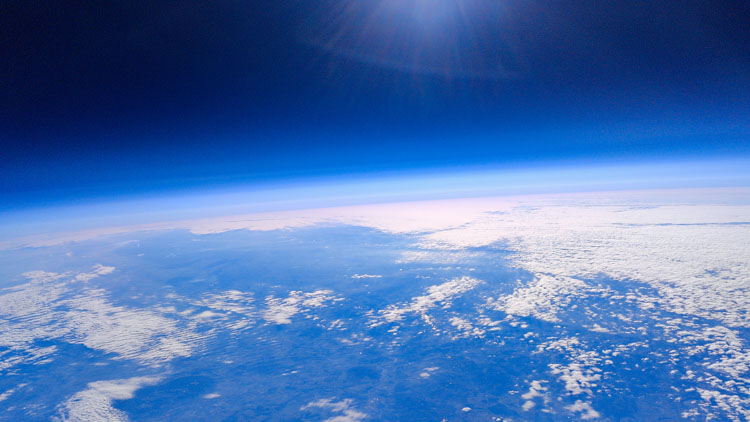
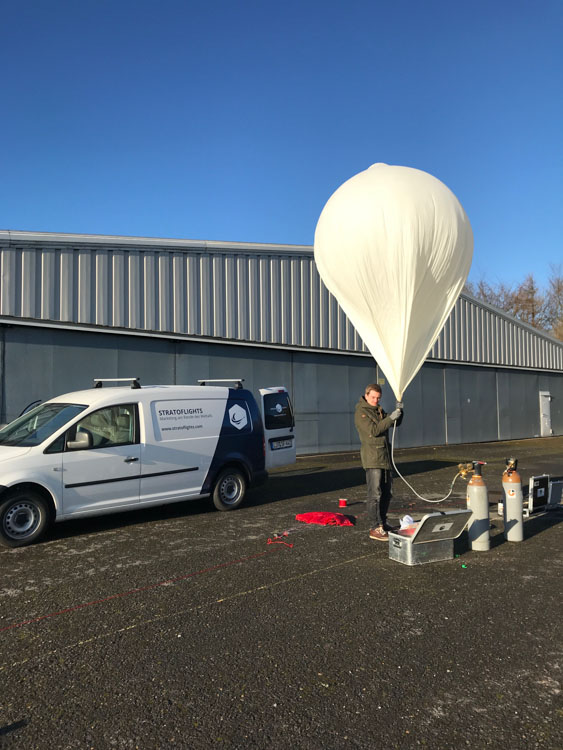

.jpeg)
